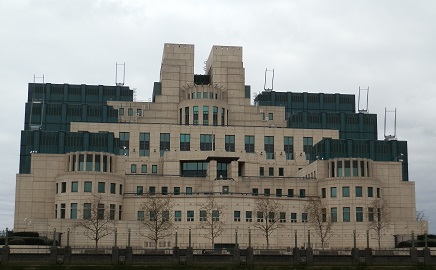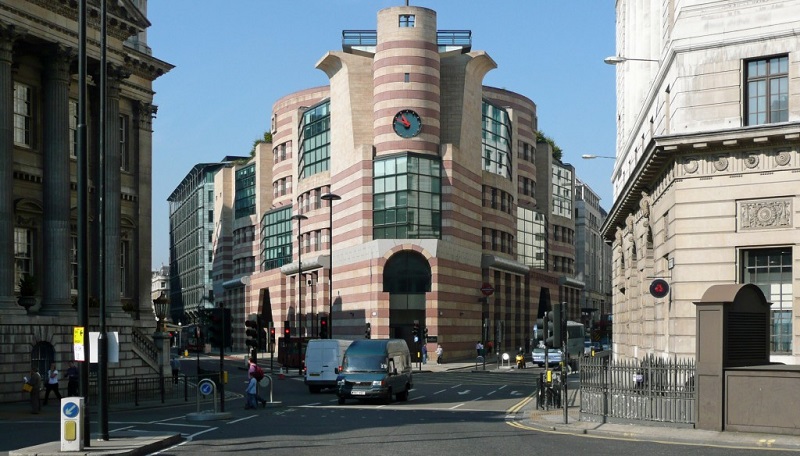Postmodern architecture
Postmodern architecture, also known as postmodernism (or ‘pomo’), is an architectural style that emerged in the late-1960s as a reaction against modernism.
Modernist architecture had faced increasing criticism for its rigid doctrines, uniformity and perceived lack of local and cultural context. There were also those who derided the modernism of Le Corbusier and Ludwig Mies van der Rohe for being too bleak, formal and austere.
The failure of building methods and materials, such as the collapse of Ronan Point in 1968, and the gradual deterioration of once-‘utopian’ housing estates, also contributed to the backlash against modernism.
In 1966, the architect and theorist Robert Venturi published ‘Complexity and Contradiction in Architecture’ the catalyst for the postmodern movement. Venturi argued that the ancient cities of Rome spoke in historical layers and vivid juxtapositions rather than one homogenous voice. He also claimed that buildings, as well as being designed objects, were feats of placemaking and should seek to accommodate local conditions of neighbourhood and public behaviour; as individual and rich as the building occupants themselves.
In practice, postmodern architecture moved away from the rigid formalities of modernism and began to incorporate stylistic references that were often playful and symbolic, using techniques such as shape, colour and trompe l’oeil; applying elements and structural forms from classical architecture to modern designs.
Postmodern architecture tends to be characterised by its highly decorative, whimsical and kitsch aesethetic; above all refusing to draw inspiration solely from a single source, and often focussing on form over function. It also has a metaphoric nature. This refers to structural designs that are based on forms which are non-architectural. A well-known example is the Lotus temple of New Delhi which is based on the shape of a lotus flower; and the Sydney Opera House which is inspired by the sails of ships.
Architects sought to incorporate design elements from multiple styles, breaking down the boundaries between them. Accordingly, postmodernism is often praised for its eclectic and joyful style.
However, it has also faced its fair share of criticism, with many deriding it as ugly, superficial, derivative, and, in the words of Fredric Jameson, ‘the cultural logic of late capitalism’. Indeed, the huge urban expansion of Dubai has led to it being referred to as the ‘global capital of postmodernism’.
Postmodernism flourished during the 1980s and 1990s, sub-dividing into other styles such as high-tech, deconstructivism, and neo-classicism. Leading architects of the movement included; Philip Johnson, Charles Moore, Frank Gehry, Michael Graves, Terry Farrell and James Stirling.
Notable postmodern buildings include:
- SIS Building by Terry Farrell [see top image].
- Piazza d’Italia by Charles Moore.
- Portland Building by Michael Graves.
- Bank of America Center, Houston by Philip Johnson.
- Neue Staatsgalerie by James Stirling.
- No.1 Poultry by James Stirling.
[edit] Related articles on Designing Buildings Wiki
Featured articles and news
ECA progress on Welsh Recharging Electrical Skills Charter
Working hard to make progress on the ‘asks’ of the Recharging Electrical Skills Charter at the Senedd in Wales.
A brief history from 1890s to 2020s.
CIOB and CORBON combine forces
To elevate professional standards in Nigeria’s construction industry.
Amendment to the GB Energy Bill welcomed by ECA
Move prevents nationally-owned energy company from investing in solar panels produced by modern slavery.
Gregor Harvie argues that AI is state-sanctioned theft of IP.
Heat pumps, vehicle chargers and heating appliances must be sold with smart functionality.
Experimental AI housing target help for councils
Experimental AI could help councils meet housing targets by digitising records.
New-style degrees set for reformed ARB accreditation
Following the ARB Tomorrow's Architects competency outcomes for Architects.
BSRIA Occupant Wellbeing survey BOW
Occupant satisfaction and wellbeing tool inc. physical environment, indoor facilities, functionality and accessibility.
Preserving, waterproofing and decorating buildings.
Many resources for visitors aswell as new features for members.
Using technology to empower communities
The Community data platform; capturing the DNA of a place and fostering participation, for better design.
Heat pump and wind turbine sound calculations for PDRs
MCS publish updated sound calculation standards for permitted development installations.
Homes England creates largest housing-led site in the North
Successful, 34 hectare land acquisition with the residential allocation now completed.
Scottish apprenticeship training proposals
General support although better accountability and transparency is sought.
The history of building regulations
A story of belated action in response to crisis.
Moisture, fire safety and emerging trends in living walls
How wet is your wall?
Current policy explained and newly published consultation by the UK and Welsh Governments.
British architecture 1919–39. Book review.
Conservation of listed prefabs in Moseley.
Energy industry calls for urgent reform.

































